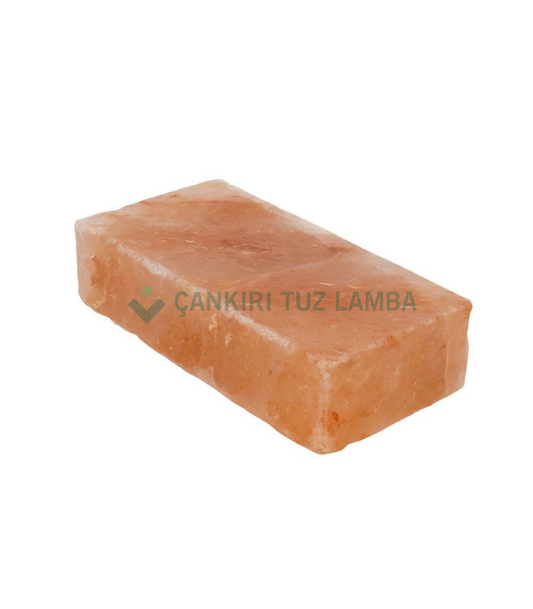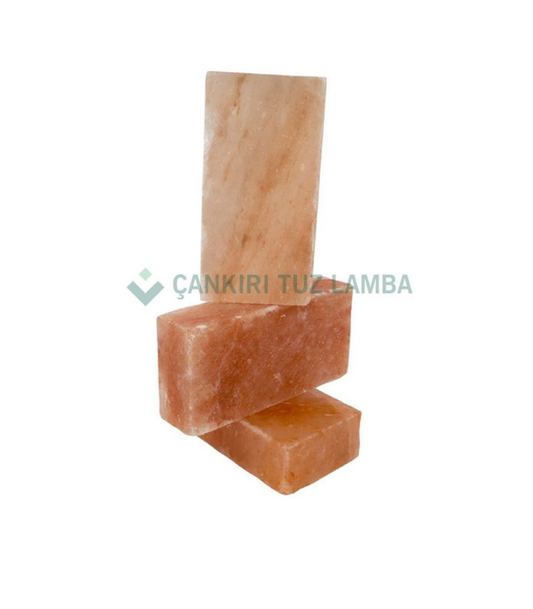Collection: Salt Brick Types & Prices
Bringing out the true flavor of meat requires specific efforts and techniques. When it comes to meat flavor, we must emphasize the concept of dry aging , or " dry aging ." This deeply rooted and traditional method is a favorite among both professional chefs and meat lovers. Also known as dry aging, this technique involves holding meat at specific humidity and temperature levels for a specific period of time. This delicate process aims to soften the meat's texture and deepen its flavor.
Of course, the right temperature or time isn't sufficient to achieve this perfection. Supportive materials known as Himalayan bricks or Himalayan salt bricks play a role in maintaining ideal environmental conditions. Himalayan salt bricks balance the interior climate of dry-aging cabinets while also creating a visually striking atmosphere. So, what are Himalayan salt bricks , and is wholesale salt brick sales possible? What are the current salt brick prices in 2025 ? In this article, we'll try to answer all these trending questions.
General Information About Dry Aging

The term "dry aging" is commonly used in Turkish as dry aging . This special method, used to enhance the flavor and, of course, the aromatic depth of meat, is quite common today. This method, which can also be considered a type of maturation technique, aims to leave behind the hard, dense, and heavy flavors of freshly cut meat. As we emphasized above, a salt brick is essential for dry aging . A brick in a meat cabinet adds a completely different dimension to this technique thanks to its salt structure. To achieve meat that is both balanced, odorless, and tender, you too must learn the intricacies and requirements of this technique.
The dry-aging technique produces excellent results in high-quality beef, largely found between the ribeye and the rump, where the tenderloin is removed, containing the marbled fat. During the aging process, the meat undergoes two major changes in specially controlled cabinets. First, the moisture within the meat gradually evaporates. This controlled drying intensifies the meat's flavor and creates an aromatic layer. In the second stage, enzymes found in the meat's structure come into play. This breaks down the muscle, connective tissue, and nerve fibers, leaving the meat much more tender.
Advantages of Salt Bricks

Extracted worldwide largely from the vast salt deposits in the Punjab region of Pakistan, rock salt can be described as a miracle of nature, crafted over millions of years. This structure, known as the Himalayan salt brick , stands out for its unique advantages. Known for its distinctive pink hue, this special salt offers a wide range of decorative and therapeutic uses beyond the culinary.
Today, salt can be found in various forms, such as salt bricks and salt lamps . Spas and therapy rooms, where salt is used in brick form, create a relaxing atmosphere by incorporating natural minerals into the body. Himalayan salt bricks offer multiple benefits in dry-aging cabinets. Their hygroscopic nature, in particular, maintains the humidity balance in the environment. This prevents the surface of meat from drying out excessively. It also reduces the risk of unwanted mold growth.
Meanwhile, the natural antimicrobial properties of salt increase the hygiene of the cabinet. Salt makes it difficult for microorganisms to multiply, creating a safe environment for meat to mature. Furthermore, the salt bricks add aesthetic value to the cabinet. The pink-toned salt blocks in the background of the meat create a visual feast for both customers and chefs.
In some special cases, a salt brick can add a slight mineral kick to the surface of the meat. This is a natural effect that deepens the meat's flavor profile and adds a subtle aroma. However, this effect is generally very mild and does not overpower the meat's original flavor. As interest in this area grows, wholesale Himalayan cooking brick sales are also increasing.
The Most Common Uses of Salt Bricks
Himalayan salt brick products have a wide range of uses. The most well-known use of salt bricks is, of course, dry-aging cabinets. In these functional cabinets, the salt bricks are usually arranged to cover the back wall, achieving both a visual and functional effect. An average of 50 bricks are used for a square meter of space, but this number will vary depending on the cabinet's shape. Similarly, the price of salt bricks varies depending on the area and quantity used.
Himalayan bricks are also widely used in salt rooms. Spas, wellness facilities, and therapeutic environments create a completely different atmosphere with Himalayan salt bricks. Himalayan salt bricks can also be used for cooking. Today, salt bricks are produced in various sizes, typically 10x20x2.5 cm or 10x20x5 cm, depending on the intended use. Achieving excellent results with the dry-aging method is directly related to the quality of the salt.
Today, we offer Himalayan salt bricks, the professional choice of both industrial kitchen manufacturers and refrigeration system manufacturers, at the most affordable wholesale prices. To achieve flawless results in your dry-aging cabinets or refrigeration systems, you can obtain the salt bricks you need from us whenever you need them. For wholesale salt brick sales and current pricing, simply contact Salt Room .
-
Himalayan Salt Brick for Dry Aging Meat 20x10x2.5 cm
Regular price 100.00TLRegular price -
Himalayan Salt Brick for Dry Aged Refrigerators 20x10x5 cm
Regular price 150.00TLRegular price -
Himalayan Salt Brick for Salt Room Construction 20x10x5 cm
Regular price 120.00TLRegular price -
Himalayan Salt Brick for Salt Room 20x10x2.5 cm
Regular price 80.00TLRegular price









